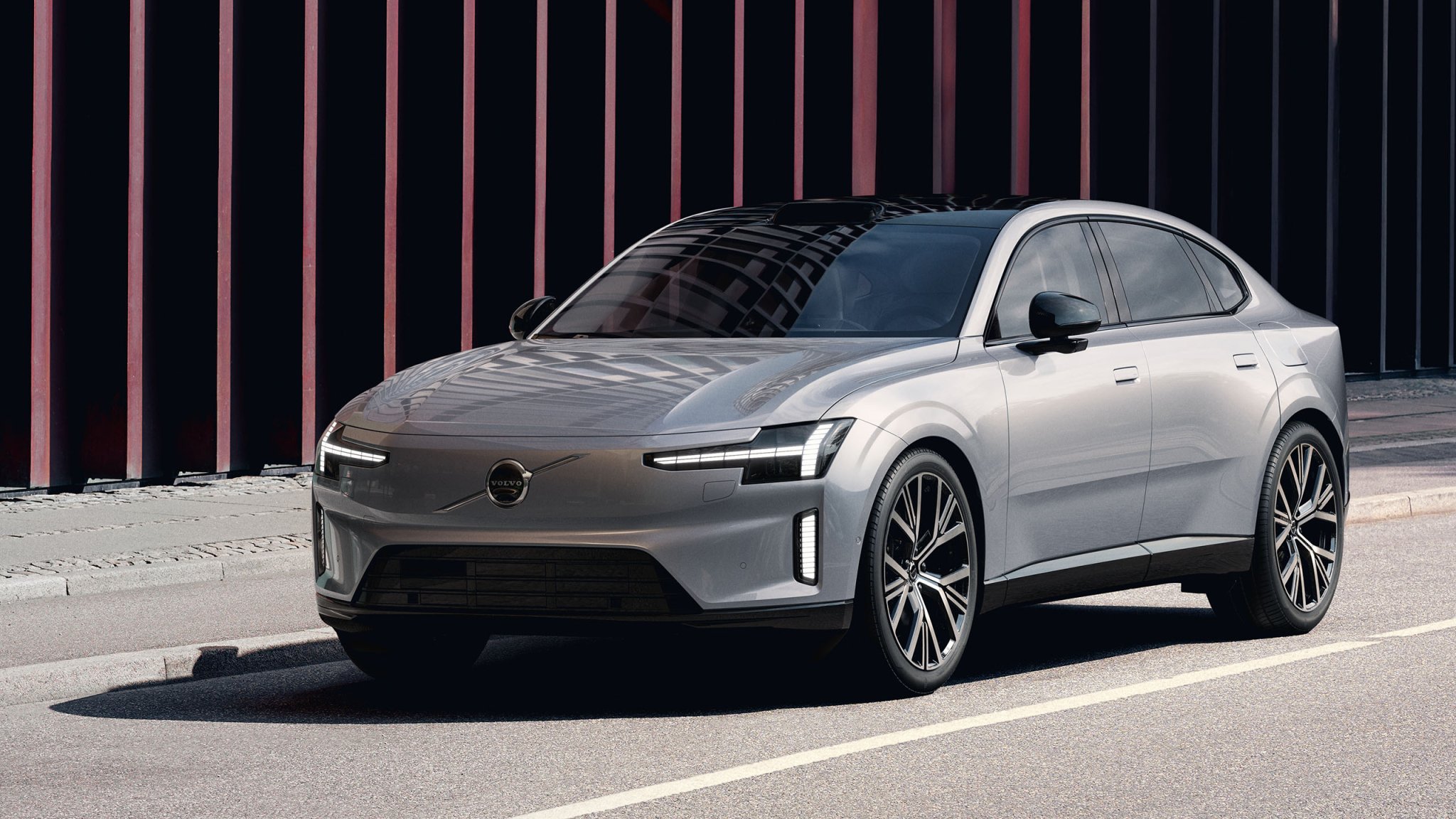

Last September, Volvo teased us with early images of its forthcoming flagship electric sedan. We were a bit curious as to why Volvo had gone to such lengths to obscure the lower half of the vehicle in those pictures. It’s safe to say we understand why now. Meet the 2026 Volvo ES90 “sedan.”
Let’s set aside the unusual proportions for the time being and focus on the specs. Globally, the ES90 will be available in three variants: Single Motor, Twin Motor, and Twin Motor Performance. The Single Motor’s lone drive unit sits in the rear and produces about 330 horsepower (245 kilowatts) and 354 lb-ft of torque. This is paired with a 92-kWh battery pack (88 kWh usable) with an onboard 300-kW charger. Both Twin Motor versions get a second drive unit up front, but as the name implies, the Twin Motor Performance offers more power (~670 hp vs. 440 hp) and torque (635 lb-ft vs. 494 lb-ft). Both get the same battery upgrade over the Single Motor, packing a 106-kWh pack (102 kWh usable). The larger pack can charge at 350 kW.
While the Single Motor may ultimately be the most efficient of the three, its smaller pack gives it less range. Volvo doesn’t have EPA numbers just yet, but projects 404 miles of range on the European WLTP cycle for the Single Motor and 435 miles for both Twin Motor models. EPA tests frequently result in reduced range projections for EVs compared to WLTP ratings, so take those conversions with a grain of salt. Volvo has not yet said which variants we can expect to see come to the U.S. market, but we’d be surprised if the Twin Motor and Twin Motor Performance models weren’t both shoo-ins.



As for that exterior, it almost looks like a cross between the Toyota Crown and the work of Volvo’s friends over at Polestar. And the tall stance is no accident; the company’s press release calls out the ES90’s “slightly raised ride height to provide the driver with a more commanding view of the road.” Call it what you will, because Volvo doesn’t seem interested in classifying it as a sedan, SUV, or anything in between.
At least the cabin is unmistakably Volvo—from what we’re allowed to see of it, anyway. The minimalism observed elsewhere in the company’s electrified vehicles continues here, with most major functions appearing to reside behind the car’s main vertical 14.5-inch touchscreen. There’s a limited control interface directly beneath it, plus a few standard controls on the wheel and stalks, but we see nothing at all here that resembles a knob.

As befits a luxury flagship, Volvo devoted a great deal of time to interior comforts. The company claims that the cabin is one of the quietest ever built, but you can make it as loud as you want thanks to an available Bowers & Wilkins 25-speaker audio system with Dolby Atmos. The panoramic sunroof is even available with electrochromic dimming technology rather than a simple sunshade.
Apart from that, Volvo was mostly interested in talking about the ES90’s robust electrical architecture and behind-the-scenes software improvements. We’re sure both are impressive to industry insiders, but we’re mostly interested in how it feels to drive, and that’s something we likely won’t find out until next year. While the U.K. and parts of Europe can order the new ES90 right now, the rest of the world (America included) will have to wait until either late 2025 or early 2026. That’s a long time to ponder what it looks like—for better or worse.
Got tips? Send ’em to tips@thedrive.com